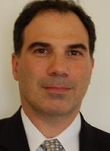Market Access Impediments: Where Should Biosimilars Go From Here?
By Anita Burrell, principal of Anita Burrell Consulting LLC

Biosimilars were touted as a payer’s tool to gain savings in specialty markets, but a recent survey by Avalere of the top 25 payers in the U.S. (about 189 million covered lives) using publicly available coverage policies found that biosimilars are commonly subject to step through polices, including those that require the patient to “fail” first on a branded product, and only then will the payer cover a biosimilar of that same branded product (i.e., the biosimilar’s reference product). Policies like this may be why although the Congressional Budget Office (CBO) originally estimated a 10-year decrease in federal spending of $5.9 billion attributable to “follow on biologics”/biosimilars in 2009, it is estimated the actual savings have only been 8 percent of that amount (approximately $241 million).
In order to understand what is going on in the U.S. marketplace and the options that may be available for biosimilar manufacturers, I reached out to four experts in the field: Gillian Woollett, senior VP, Avalere; Nicolas Arkells, CEO, Manticore Consulting Group; Sheila Frame, VP and head, Sandoz Biopharmaceuticals, North America; and Roman Casciano, general manager, Analytica Laser. In this first article of a three-part series, these experts will share their insights on the current status of the market for biosimilars and explore some of the reasons for the difference between the U.S. and Europe.
Anita Burrell: Why has the uptake of biosimilars in the United States been slow compared to Europe? What are some of the main obstacles accounting for this difference?
 Sheila Frame, Sandoz: Some of the biggest challenges to biosimilar uptake are patent and intellectual property (IP) issues. Although a 2017 Supreme Court ruling on the biosimilar launch process provided more clarity regarding patent lawsuits, there are still some manufacturers using this type of litigation to block access to biosimilars, which is bad for patients and bad for the healthcare system. The complexity of biologics makes IP disputes themselves highly complex, and therefore time-consuming. In Europe, the regulatory pathway and litigation procedures are much clearer and more defined. We need to enact similar clear-cut guidance in the U.S.
Sheila Frame, Sandoz: Some of the biggest challenges to biosimilar uptake are patent and intellectual property (IP) issues. Although a 2017 Supreme Court ruling on the biosimilar launch process provided more clarity regarding patent lawsuits, there are still some manufacturers using this type of litigation to block access to biosimilars, which is bad for patients and bad for the healthcare system. The complexity of biologics makes IP disputes themselves highly complex, and therefore time-consuming. In Europe, the regulatory pathway and litigation procedures are much clearer and more defined. We need to enact similar clear-cut guidance in the U.S.
 Nicolas Arkells, Manticore Consulting Group: Yes, that’s right — in the United States, biosimilars face unique barriers not encountered in the EU. For the U.S., biosimilars were made possible by the Biosimilars Price Competition and Innovation Act (BPCIA), and contrary to the European laws, the BPCIA is ambiguous as to implementation, especially surrounding patents and trade secrets. In the U.S., when a statute is unclear, there is greater opportunity to exploit a gap or ambiguity in the legislation, as can be seen in the onslaught of litigation that has occurred after every single approved biosimilar. The U.S. presently has a situation in which the sponsor biologic can create high litigation costs that deter smaller manufacturers from pursuing biosimilar research. This is because in the U.S., what is known as “the American rule” makes each party responsible for their attorney costs regardless of who prevails, and the threshold for bringing a lawsuit is unfortunately low. Therefore, even in the biosimilar pipelines, we are seeing the industry dominated by a handful of large firms, which can bear the litigation costs. If there continues to be only a few large biosimilar manufacturers, then economics dictates oligopolistic pricing, rather than the more competitive pricing situation observed in the past with generic drugs.
Nicolas Arkells, Manticore Consulting Group: Yes, that’s right — in the United States, biosimilars face unique barriers not encountered in the EU. For the U.S., biosimilars were made possible by the Biosimilars Price Competition and Innovation Act (BPCIA), and contrary to the European laws, the BPCIA is ambiguous as to implementation, especially surrounding patents and trade secrets. In the U.S., when a statute is unclear, there is greater opportunity to exploit a gap or ambiguity in the legislation, as can be seen in the onslaught of litigation that has occurred after every single approved biosimilar. The U.S. presently has a situation in which the sponsor biologic can create high litigation costs that deter smaller manufacturers from pursuing biosimilar research. This is because in the U.S., what is known as “the American rule” makes each party responsible for their attorney costs regardless of who prevails, and the threshold for bringing a lawsuit is unfortunately low. Therefore, even in the biosimilar pipelines, we are seeing the industry dominated by a handful of large firms, which can bear the litigation costs. If there continues to be only a few large biosimilar manufacturers, then economics dictates oligopolistic pricing, rather than the more competitive pricing situation observed in the past with generic drugs.
Frame: Another aspect, and perhaps the most critical difference, is that in the U.S., health plans and pharmacy benefit managers (PBMs) have not facilitated patient access to biosimilars. Contracting reference product companies offer large incentives to those in the pharmaceutical supply chain, like PBMs, in exchange for prioritizing their product. This process stifles competition by blocking biosimilar access and uptake. We need to create better contracting models that help patients access cost-saving biosimilar treatments.
 Gillian Woollett, Avalere: While currently the largest single market in the world overall by dollar value, the U.S. comprises thousands of payers, and a lot of the incentives on how their choices are made are less than transparent. Because the U.S. is approximately 50 percent of the global market for biologics, and yet we are only about 5 percent of the world’s population, we may be part of a “too big to fail” phenomenon where counter-detailing of biosimilars writ large is an increasing and very real issue. Nonetheless, biosimilars in the U.S. are precipitating savings, but the bigger issue for a multisource market is that they are not readily gaining market share. This is not a sustainable business model.
Gillian Woollett, Avalere: While currently the largest single market in the world overall by dollar value, the U.S. comprises thousands of payers, and a lot of the incentives on how their choices are made are less than transparent. Because the U.S. is approximately 50 percent of the global market for biologics, and yet we are only about 5 percent of the world’s population, we may be part of a “too big to fail” phenomenon where counter-detailing of biosimilars writ large is an increasing and very real issue. Nonetheless, biosimilars in the U.S. are precipitating savings, but the bigger issue for a multisource market is that they are not readily gaining market share. This is not a sustainable business model.
 Roman Casciano, Laser Analytica: Well, I don’t think it is entirely surprising given that it is generally a more “top-down” process in most EU settings versus the more organic movement we are used to here, and, of course, the more acute focus placed on relative value for money in Europe as well. Also, compounding that are the distortions created by rebates, which often make the economic calculus a little less straightforward. Nonetheless, while we may be lagging, I would expect that eventually we will hit that inflection point where people will wake up to the obvious.
Roman Casciano, Laser Analytica: Well, I don’t think it is entirely surprising given that it is generally a more “top-down” process in most EU settings versus the more organic movement we are used to here, and, of course, the more acute focus placed on relative value for money in Europe as well. Also, compounding that are the distortions created by rebates, which often make the economic calculus a little less straightforward. Nonetheless, while we may be lagging, I would expect that eventually we will hit that inflection point where people will wake up to the obvious.
Frame: Finally, there are major differences between the U.S. and EU from a regulatory and health system perspective, and there are a number of policy and regulatory barriers to overcome in the U.S. that do not exist in the EU, including interchangeability. An interchangeable designation is a request for additional specific data, beyond the rigorous and high bar set for FDA biologic and biosimilar approval. The safety and efficacy profiles of biosimilars and their reference medicine are the same regardless of an interchangeability designation.
Woollett: The FDA is being most helpful by providing educational materials1 that emphasize that every biosimilar approved by the agency is achieving the same standard as any other biologic. As experience in the U.S. (with 11 approvals and three launches) increases, and we recognize the successful experiences in Europe (with nearly 50 approvals) and elsewhere, this need for education may change, but I am concerned that we do not have the basic mechanisms to ensure a competitive and sustainable distribution of market share for all biologics.
Arkells: One partial solution would be for Congress to amend the BPCIA to bring greater clarity and protection for biosimilar manufacturers as a means of reducing litigation expenses. This is critical, since, when courts attempt to address legislative gaps, they can only control what happens in their districts, not the entire U.S. This also drives the disharmony among state biosimilar laws, the so called “blocking statutes,” as they struggle to address gaps not handled by Congress or the FDA. “Fail first” rules in reimbursement contracts also present a unique U.S. issue because a patient is required for an arbitrary period to use a more expensive biologic first. These barriers are more difficult to address in the U.S., as the payer system is fragmented among many parties, unlike Europe, where most countries have centralized healthcare systems. Another issue with “fail first” provisions is that they are interpreted in accordance with state, not federal, law, as they are contract clauses.
Burrell: Why do you think we have seen step through policies come into play, and does this administrative step make sense in driving behavior to effective use of biosimilars?
Woollett: As you noted in your opening, Avalere recently did some research into this matter.2 Recognizing that we have limited data in the U.S. with only three biosimilars launched, we were nonetheless somewhat surprised to find how common such step through policies are. If anything, the data to date suggests that, at least in the medical benefit, the policies are to minimize use of the biosimilar yet maintain an appearance that the biosimilar is available.
For example, of 25 plans (189 million covered lives) we examined with publicly available policies, 18 (172 million covered lives) have coverage or formulary documents detailing management for infliximab and/or competitor products. Ten of the 18 plans (55 percent of plans, 52 percent of covered lives) require the use of the reference infliximab product (infliximab, Remicade) first, alone or in combination with another DMARD (disease-modifying antirheumatic drug). One (5 percent of plans, 2 percent of covered lives) allows for the use of either the reference product or infliximab-dyyb (Inflectra) as the first step. One (5 percent of plans, 1 percent of covered lives) requires the use of infliximab-dyyb first. Given that we can think of no circumstance where it would be clinically appropriate to receive an infliximab-containing product after having failed on another infliximab-containing product, and that this may indeed be dangerous if there was an earlier immunological response, these policies would appear to warrant reconsideration. All the more so given that the understanding by physicians of biosimilars is limited, and such coverage policies could be interpreted to condone, if not encourage, the use of the biosimilar after failure on the reference.
The pharmacy benefit situation for filgrastim is somewhat different. In the same 18 plans, five (28 percent of plans, 49 percent of covered lives) prefer the biosimilar, filgrastim-sndz. Five (28 percent of plans, 27 percent of covered lives) prefer the reference filgrastim. Eight plans (44 percent of plans, 24 percent of covered lives) do not indicate a preference through formulary design.
Casciano: Clearly this doesn’t make much sense at all. Obviously, there are some underlying reasons for putting these restrictions into place, but they have nothing at all to do with efficiency or a cost-effective decision-making process. Not only does it add administrative cost and expense, but at the end of the day it gets exactly the wrong patients onto the treatment. It only really makes sense when you have a situation where there is a treatment being required as a first step that has a clear clinical advantage or a clearly lower cost, and I don’t think that is the case here.
Arkells: A simple, yet effective solution would be for the federal government to adopt a “default rule” mandating a switch to a less expensive biosimilar whenever possible for all systems touched by federal funding. Where Medicare, Medicaid, and Tricare move, so will the market, which may also inspire local governments to legislate this requirement for private healthcare as well. This proved incredibly successful for the generic drug market in the past. It is also consistent with prescriber beliefs, as almost 75 percent of prescribers, according to one survey, are comfortable with interchangeability, so long as the biosimilar has obtained FDA approval.3
Challenges still exist in tapping the potential of biologics for manufacturers and other stakeholders in the U.S. healthcare market; however, the opportunity and pressure to do so is increasingly. Biosimilars have to establish value over and above price, and real-world evidence (RWE) has the power to inform decisions around biosimilar use and provide competitive differentiation to improve market access.
Read the next article in this three-part series: How Recent Regulatory And Payer Developments Will Impact U.S. Biosimilar Access.
References:
- https://www.fda.gov/drugs/developmentapprovalprocess/howdrugsaredevelopedandapproved/approvalapplications/therapeuticbiologicapplications/biosimilars/default.htm
- http://avalere.com/expertise/life-sciences/insights/use-of-step-through-policies-for-competitive-biologics-among-commercial-us
- Cohen H, Beydoun D, Chien D, et al. Awareness, Knowledge, and Perceptions of Biosimilars Among Specialty Physicians. Advances in Therapy. 2016;33(12):2160-2172.
About The Participants:
Gillian Woollett, senior VP, leads the Avalere FDA Practice. She provides the "prequel" of scientific and regulatory strategic policy expertise that supports medicinal products gaining approval at the FDA in a manner that allows them to be successful in the public and private reimbursement world. She is building a bridge for Avalere clients from the FDA space into the traditionally separate Centers for Medicare & Medicaid Services and healthcare policy/business world. Prior to joining Avalere, Woollett was chief scientist at Engel & Novitt, LLP, VP of science and regulatory affairs at BIO, and AVP of biologics and biotech at PhRMA. She has been an appointee on federal advisory committees to the and the Department of Commerce. She has a DPhil in immunology from the University of Oxford and an MA and BA in the natural sciences tripos (biochemistry) from the University of Cambridge.
Nicolas Arkells is the CEO at Manticore Consulting Group, a global health economics and outcomes consulting firm. He has over 15 years of leadership experience ensuring organizational commitment to statistical analysis and implementation. His law and science juris doctorate concentrated on intellectual property, which encouraged his research in biotechnology, market access, policy, regulatory strategy, and patent law. His MBA focused on the application of analytics to provide solutions to real-world problems in the healthcare industry. He is certified in medical devices and pharmaceuticals by the Regulatory Affairs Professionals Society, Lean Six Sigma black belt trained in the healthcare industry, agile certified as a PSM and PSPO, and certified in global human capital through Columbia University. He has been recognized for excellence in legal research, leadership, and alternative dispute resolution.
Sheila Frame is VP and head of Sandoz Biopharmaceuticals, North America, responsible for the development and commercialization of the biosimilar medicines portfolio in the U.S. and Canada. She has more than 20 years of pharmaceutical experience and serves as a member of the Sandoz U.S. Executive Committee. Frame held the role of worldwide general manager for the Immunoscience business at Bristol Myers Squibb (BMS), a role which encompasses responsibility for the commercialization of Orencia for the treatment of RA, with worldwide sales of over $2 billion, as well as the commercial development of BMS’s important pipeline assets in the therapeutic area. Prior to joining the pharmaceutical industry, . she worked as a professional lobbyist for the Canadian National Railway. She began her professional career holding senior positions with the Government of Canada as a legislative assistant where she took 17 bills through the House of Commons and Senate.
Roman Casciano is the general manager of Analytica Laser, a Certara Company. He is responsible for the coordination and management of the strategic and scientific teams of Analytica Laser and supports the company’s clientele as a market access strategist and tactician, as well as an expert in the domains of real-world evidence and economic and disease modeling. Casciano was one of the founding members of the Analytica Group in 1997 and has deep experience in developing and compiling the evidence necessary to support pricing, reimbursement, market access, and coverage decisions for health technologies around the world. He has experience across the product life cycle, including spearheading stakeholder engagement activities with U.S. and European regulators, payers, and technology assessors.
About the Author:
 Anita Burrell, principal of Anita Burrell Consulting LLC, has 23 years of leadership experience in the pharmaceutical industry. She is a founding member of the Aurora Project, which seeks to explore and promote patient-centricity in the industry, and is an adjunct professor at the Ernest Mario School of Pharmacy at Rutgers University. As a consultant, she has helped companies to: understand market dynamics and payer behavior, design Big Data platforms, develop predictive models to inform health technology assessment submissions, and understand the implications of digital health and possibilities to use behavioral economics. She holds a BA (Hons) in economics from the University of Stirling, an MA in economics from Dalhousie University, and an MBA from Kingston University.
Anita Burrell, principal of Anita Burrell Consulting LLC, has 23 years of leadership experience in the pharmaceutical industry. She is a founding member of the Aurora Project, which seeks to explore and promote patient-centricity in the industry, and is an adjunct professor at the Ernest Mario School of Pharmacy at Rutgers University. As a consultant, she has helped companies to: understand market dynamics and payer behavior, design Big Data platforms, develop predictive models to inform health technology assessment submissions, and understand the implications of digital health and possibilities to use behavioral economics. She holds a BA (Hons) in economics from the University of Stirling, an MA in economics from Dalhousie University, and an MBA from Kingston University.
